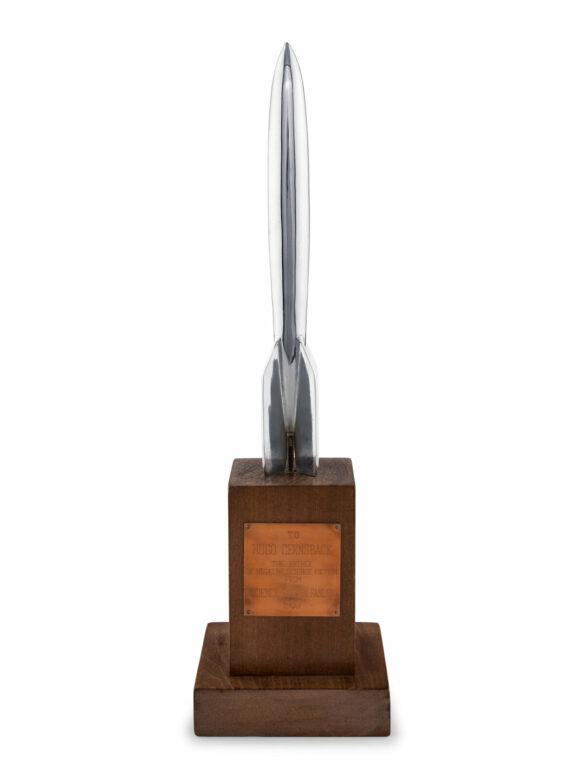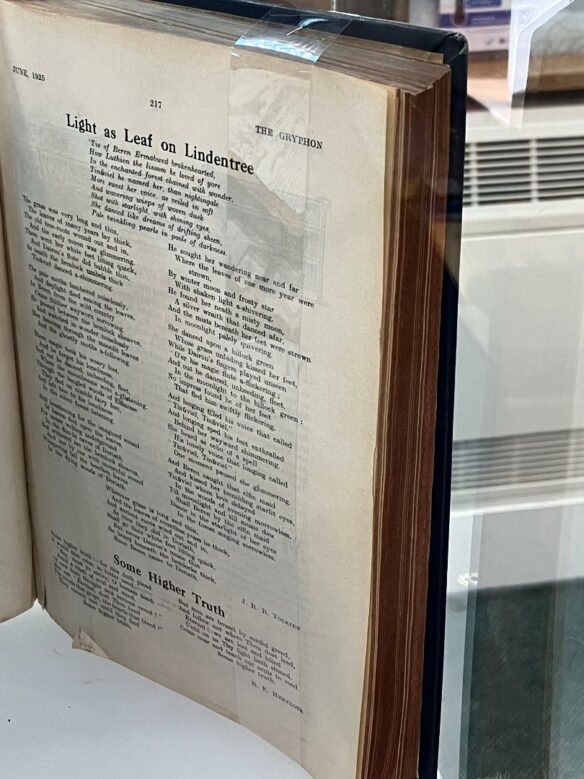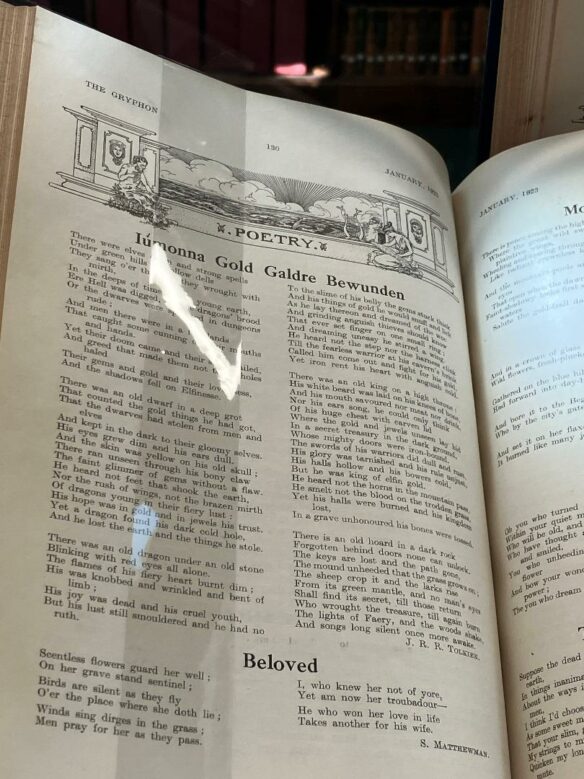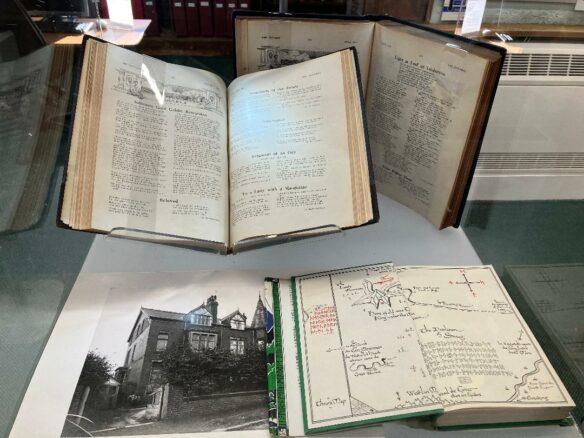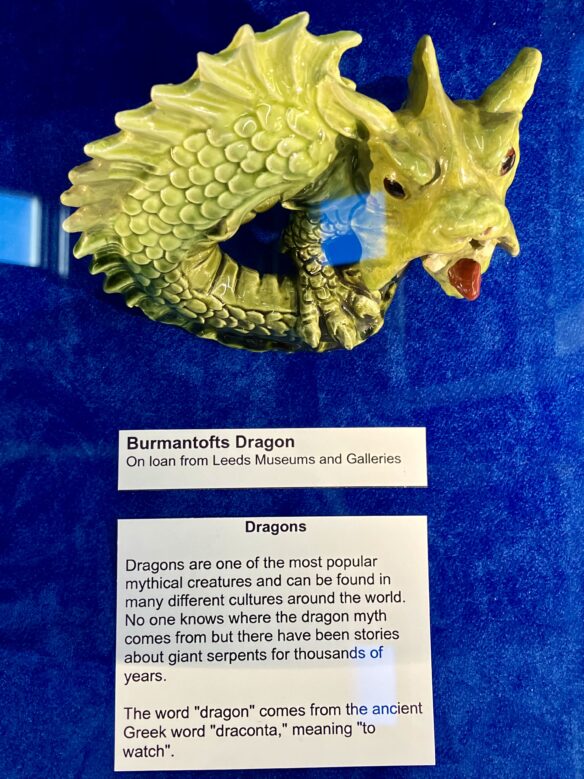(1) HOW BLACK HORROR BEGAN. Linda D. Addison goes back to the beginning in “Genesis – The First Black Horror Writers/Storytellers” at the Horror Writers Association blog.
Who were the first Black horror writers in a country that made enslaved Africans’ everyday life horrific? How did stories develop and what were their themes?
I wanted to write this because of my own curiosity. I didn’t know where this was going to lead me but the more I dug the more I found. The yellow brick road of discovery took me away from the land of published authors to places unexpected….
… Storytelling is the cornerstone of many cultures. For African and African-American communities it’s a way of communicating history, passing on lessons, and entertaining. Most of this storytelling was done in oral folktales by those surviving the nightmare of slave ships and a ‘New World’ that forbids their traditional practice.
The folk tales from Africa were modified to be acceptable in a country where anything that sounded aggressive or like strength from slaves could result in torture or death. The first recorded Black folktales I found were from the late nineteenth century. There are a number of stories with animals where one plays the part of the trickster, but I was looking for monsters, demons, etc.
“Every Tongue Got to Confess: Negro Folk-tales from the Gulf States”, Black folklore collected by Zora Neale Hurston in the late 1920s documented almost 500 folktales from 122 Black workers, farmers, and artisans by traveling to places like Alabama, Florida, and New Orleans. Besides themes of religion, family, and other social concepts I also found two sections named: “Devil Tales” and “Witch and Hant Tales” (Hant means “haunt” or “ghost”)….
(2) OCTOTHORPE. In episode 128 of the Octothorpe podcast, “A Minidisc Player Will Do You No Good”,
We report on the BSFA’s policy on reviewing, with a comment from BSFA Chair, Allen Stroud. Then, we tell you all what John’s doing for Reconnect (the 2025 Eastercon), discuss Iridescence (a bid for the 2026 Eastercon), talk BSFA Awards (presented at Eastercon) and Liz reads a book (which you could read at Eastercon).
In the podcast one of the Octothorpe crew says they’d been hearing “probably gossip” to the effect that the BSFA have been rejecting incoming reviews —
…so we were alerted last week to a blog comment from a reviewer who reviews for the BSFA Reviews, Steven French, and they say “ all the reviews I wrote for BSFA Reviews, the reviews journal of the British Science Fiction Association, have been discarded by the new editor because the BSFA is going for charitable status and so reviews of books that the reviewer is not happy with or did not understand (?) are not acceptable” which is interesting because I think we’d heard the same rumors from a couple of other sources that the new incoming bsfa reviews editor was not publishing reviews that were a bit negative or possibly a book they didn’t understand and was trying to go for a much more positive tone….
They reached out to BSFA chair Allen Stroud who told them —
- This is a simple misunderstanding on the part of the Reviews Editor in relation to BSFA oversight of its publications.
- Editorial policy of BSFA publications is usually determined by the editors.
- There is no connection between BSFA Review Editorial policy and the BSFA’s transition to being a charity. This transition has not been confirmed and will need to be confirmed (or rejected) as a motion at the forthcoming EGM on February 23rd.
- The BSFA’s constitution is to promote science fiction and science fiction criticism. There is no priority to favour either over the other.
- We will be working with the reviews editor in order to produce a clearer set of guidelines.
(3) SCL AWARDS. The Wild Robot won Outstanding Original Score for a Studio Film at the Society of Composers and Lyricists Award presentation on February 12. Here are the other “SCL Awards 2025 Winners” of genre interest.
OUTSTANDING ORIGINAL SCORE FOR A STUDIO FILM
Kris Bowers, The Wild Robot (DreamWorks Animation)OUTSTANDING ORIGINAL SCORE FOR INTERACTIVE MEDIA
Winifred Phillips, Wizardry: Proving Grounds of the Mad Overlord (Digital Eclipse)DAVID RAKSIN AWARD FOR EMERGING TALENT
Andrea Datzman, Inside Out 2 (Disney/Pixar Animation Studios)…Special honorees tonight were composer Harry Gregson-Williams and legendary director Ridley Scott, who shared the 2025 Spirit of Collaboration Award, having made seven films together. Five-time Emmy winner Jeff Beal received the Jury Award for his score for the 1920 silent film The Cabinet of Dr. Caligari, which he premiered and was performed live-to-picture at Carnegie Hall in June….
(4) TAKING UMFRAGE. Cora Buhlert was on German TV: “Cora’s TV Adventure”. Watch the video here: “Umfrage: Große Mehrheit fordert stärkere Aufarbeitung der Corona-Pandemie”.
…I got a call from a journalist from the NDR asking if I wanted to participate in a TV interview about the topic of their latest survey – “Were the covid measures too strict and do we need some kind of political post-mortem?” I considered for a moment – it is a sensitive topic, after all, and there’s a chance of pissing off people – and then said yes….
Some of Cora’s Masters of the Universe figures got on TV, too.
…In the end, the TV team decided that they preferred the dining room/hall and asked me to set up the laptop. The camera operator also asked if we could put some of my Masters of the Universe figures onto the dining table.
I said, “Of course. There actually were some figures on the table until yesterday, but I moved them away. Do you want any specific figures or should I just pick something?”
“Could we have these ladies?” the camera operator asked and pointed at three different Teela figures.
So I took the three Teelas and when they turned out to have problems keeping their footing on my quilted tablerunner, I also grabbed Battle Cat to hold them upright.
“Could we also have the King?” the camera operator asked, so I grabbed King Randor and positioned him opposite the three Teelas….
(5) A THURB BLURB. BGrandrath says, “I know a running gag when I see one. I thought this would fit the theme, and remember: you started it.” And he sent along an item title that mashes up two of the Scroll’s recent story lines. Here are more clues to the reference for those of you playing along at home. [Click for larger images.]


(6) ATWOOD’S LEGERDEMAIN. “The Backlist: Reading Margaret Atwood’s ‘The Blind Assassin’, with Ashley Winstead” by Polly Stewart at CrimeReads.
Margaret Atwood’s The Blind Assassin opens with one of the best first sentences I’ve ever read: “Ten days after the war ended, my sister Laura drove a car off a bridge.” Though the novel isn’t structured as a conventional mystery, there’s mystery inherent in that first sentence, and it only grows as the reader learns more about the narrator, Iris Chase, her sister Laura, and Alex Thomas, the man they both love. The novel spans genres, decades, and galaxies, weaving together elements that a lesser writer would never think to put together….
Ashley Winstead explains why the book is enthralling.
… One time the writer Deborah Eisenberg came to talk to us, and she was talking about braided narrative structure, where disparate parts of the story come together in a way you can’t predict. In The Blind Assassin, you’ll have one chapter with newspaper articles from the 1930’s, and in the next a story of two people having an affair, and in the next the science fiction story that one of them is writing, and in the next Iris as an old woman in her eighties reflecting on her life. Atwood puts all these pieces together and allows the reader to make the connections and associations between them. I just fell in love with that form of writing, and I thought of The Blind Assassin as the ultimate version of that kind of narrative.…
(7) BONUS BIRTHDAY.
[Written by Paul Weimer.]
February 12, 1929 — Donald Kingsbury, 96.
By Paul Weimer. The first ever winner of the Compton Crook Award Donald Kingsbury has sat in a position of appreciating and boosting science fiction for decades. The inaugural Compton Crook Award-winning book was Courtship Rite, which I read back in the 80’s and was my first introduction to his work. It’s a throw-into-the-deep-end space colony novel that impressed for me just how much Kingsbury likes to play the harsh main beats of science fiction. It’s not a 101 Science Fiction work, since the protocols of the book mean that you really want to feel and known the ebb and flow of how science fiction novels work before ever tackling it.

There has been a long promised but never materialized sequel that has been in the works for decades. I’d read it…but I’d want to re-read the original first if it was released but…hold that thought for a moment.
Psychohistorical Crisis, however, is his most audacious and outstanding work. It started off as a novella (Historical Crisis) in the collection Far Futures, which I happened to recently re-read in an audio edition. Psychohistorical Crisis is a full-on expansion of that novella. The best way I can describe it, however cheekily, is that it is a full-on fanfic novel of Isaac Asimov’s Foundation, set sometime after the Galactic Empire has risen again. The numbers that make it not an Asimov novel and instead set in a different ‘verse are rubbed off very gently. There is nothing in the novel that contradicts or contraindicates that it is in Asimov’s ‘verse. Even the names of the characters in the novel (e.g. Eron Osa) sound Asimovian. If you ever wondered what a Second Empire Asimov story could look like, Psychohistorical Crisis has got you covered. Like Courtship Rite, it dumps you in the deep end but the swim is so worth it.
But there is one complaint I have. I’ve recommended two wonderful novels of his, and I am sure that readers in this space might want to try his work, if they haven’t. But…his work is resolutely out of print. No ebook editions. Only that audio book of Far Futures with his novella. Getting a hold of his work requires work to get used editions. And that is a damn shame. I can’t even remember if I have my copy of Psychohistorical Crisis.
But again, not a 101 SF writer, maybe a 301 writer for when you want something uncompromising and dunked into the deep end. That’s Kingsbury’s work to me.
(8) COMICS SECTION.
- Tom the Dancing Bug meets a scientist’s worst nightmare.
- Saturday Morning Breakfast Cereal has a new version of ‘when I was a kid’.
- Brevity has dinosaur jokes.
- Rubes’ dragon has symptoms.
(9) ANTICIPATION IS MAKING ME PRATE. [Item by Steven French.] Here’s the latest column from Keza Macdonald, the Guardian’s gaming correspondent: “Top of the flops: just what does the games industry deem ‘success’ any more?”
Back in 2013, having bought the series from Eidos, Square Enix released a reboot of the hit 1990s action game Tomb Raider starring a significantly less objectified Lara Croft. I loved that game, despite a quasi-assault scene near the beginning that I would later come to view as a bit icky, and I wasn’t the only one – it was extremely well received, selling 3.4m copies in its first month alone. Then Square Enix came out and called it a disappointment.
Sales did not meet the publisher’s expectations, apparently, which raises the question: what were the expectations? Was it supposed to sell 5m in one month? If a book sells 10,000 copies in a week it’s considered a bestseller. Even at the height of its popularity in the 90s, no Tomb Raider game ever sold more than a few million. Square Enix’s expectations were clearly unrealistic. It wouldn’t be the last time; in a 2016 interview with Hajime Tabata, Final Fantasy XV’s director, he told me that game needed to sell 10m to succeed.
Last week in an earnings call, EA’s executives had to explain a shortfall in profits. It was driven mostly by EA FC, the ubiquitous football series whose revenue was down on the previous year, but CEO Andrew Wilson also singled out the long-awaited RPG Dragon Age: The Veilguard, which came out last October. “Dragon Age had a high-quality launch and was well reviewed by critics and those who played. However, it did not resonate with a broad enough audience in this highly competitive market,” he said.
Dragon Age has “reached 1.5 million players” in the months since launch, which presumably includes people paying via subscription services as well as direct sales. If 3.4m was a disappointment for Square Enix in 2013, you can only imagine that 1.5m was a disaster for EA in 2024, when games cost multiples more to make….
(10) ICONIC RESTAURANT. Ray Bradbury (not named in the article) is another writer who frequented Musso & Frank’s in Hollywood. “Calif.’s coolest restaurant turns 106. The martinis are cold as ever” at SFGate. Fictional cop Harry Bosch has been there, too.
“You’re sitting at Jack Nicholson’s table,” my server, dressed in a sharp red jacket, told me on a recent visit to legendary Los Angeles restaurant The Musso & Frank Grill in Hollywood. According to the server, Nicholson favored the curved round booth at the back of the restaurant’s main dining room for its proximity to the back exit, making it easy to duck in and out unnoticed….
…“Last year, 145,000 customers came through the restaurant,” fourth-generation owner and Musso & Frank Chief Financial Officer Mark Echeverria tells SFGATE. “We have 210 seats, so if you drill down, that’s 460 customers a day, or over two full turns of the restaurant every night we’re open for dinner.”
That means that, all these years later, diners are still sliding into those wide red leather booths, sidling up to the bustling grill (the restaurant’s centerpiece) and grabbing ice-cold martinis at the back mahogany bar….
…In the 1930s, Carissimi and Mosso opened the exclusive Back Room, which became a favorite for celebrities and literary luminaries of the day. Orson Welles reportedly wrote “Citizen Kane” at a booth; John Steinbeck, T.S. Eliot, William Faulkner and Fitzgerald were some of the many other famous writers who considered the Back Room a second home….
(11) LEST DARKNESS FALL. SYFY Wire takes readers to “The Wildest Real-Life Twilight Zones in the Real World”.
…As sunlight hits the ocean’s surface it scatters, gets absorbed, or reflected back into space. As a result, the waters of the world get pretty dark pretty fast, and scientists often separate the seas into distinct layers based on how much light they receive.
At the ocean surface you’ll find the sunlight (euphotic) zone, where light is strong enough for photosynthesis. This layer extends to about 200 meters deep, where you’ll find the beginning of the twilight (dysphotic) zone. Here, sunlight decreases rapidly with depth. There’s not enough light for photosynthesis, but there is enough for some critters to live and see by.
The ocean’s twilight zone extends to a depth of 1,000 meters before transitioning to the aphotic zone which is itself broken into three layers. You’ll first encounter the midnight (bathypelagic) zone from 1,000 to 4,000 meters, the abyss (abyssopelagic) zone from 4,000 to 6,000 meters, and the hadal (hadopelagic) zone at 6,000+ meters…

(12) ZAPPED BY THE UNIVERSE. [Item by SF Concatenation’s Jonathan Cowie.] This week’s Nature cover story is “Cosmic Catcher”.
The cover shows a light sensor from the Kilometre Cube Neutrino Telescope (KM3NeT) at sunset above the Mediterranean Sea. This is one of thousands of sensors that are currently being assembled into enormous 3D grids in the abysses off the coast of Sicily in Italy and Provence in France. KM3NeT detects high-energy neutrinos, elementary particles that can be created by powerful events in the Universe. The neutrinos are spotted as a faint flash of light generated when the products of a neutrino interaction with water molecules pass through these detectors. In this week’s issue, the KM3NeT team presents the observation of the highest-energy cosmic neutrino ever detected. The telescope in Sicily caught a signal from a muon that had an energy of around 120 petaelectronvolts, which is most likely to have come from a neutrino of around 220 petaelectronvolts. The highest energy neutrino detected before this was 30 times less energetic. The exceptionally high energy, together with the almost horizontal direction of travel, implies that the neutrino is extraterrestrial. Its probable origin is beyond the Milky Way.

[Thanks to John King Tarpinian, Chris Barkley, Cat Eldridge, BGrandrath, SF Concatenation’s Jonathan Cowie, Steven French, Kathy Sullivan, Teddy Harvia, Mike Kennedy, and Andrew Porter for some of these stories. Title credit belongs to File 770 contributing editor of the day Soon Lee.]


